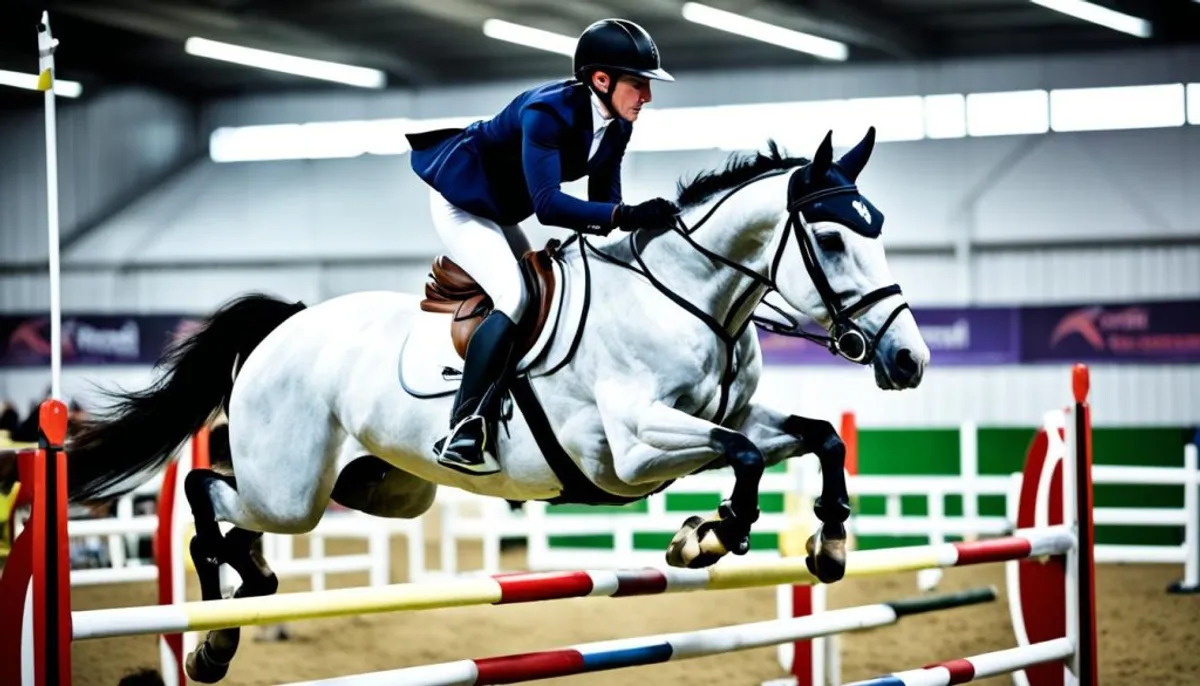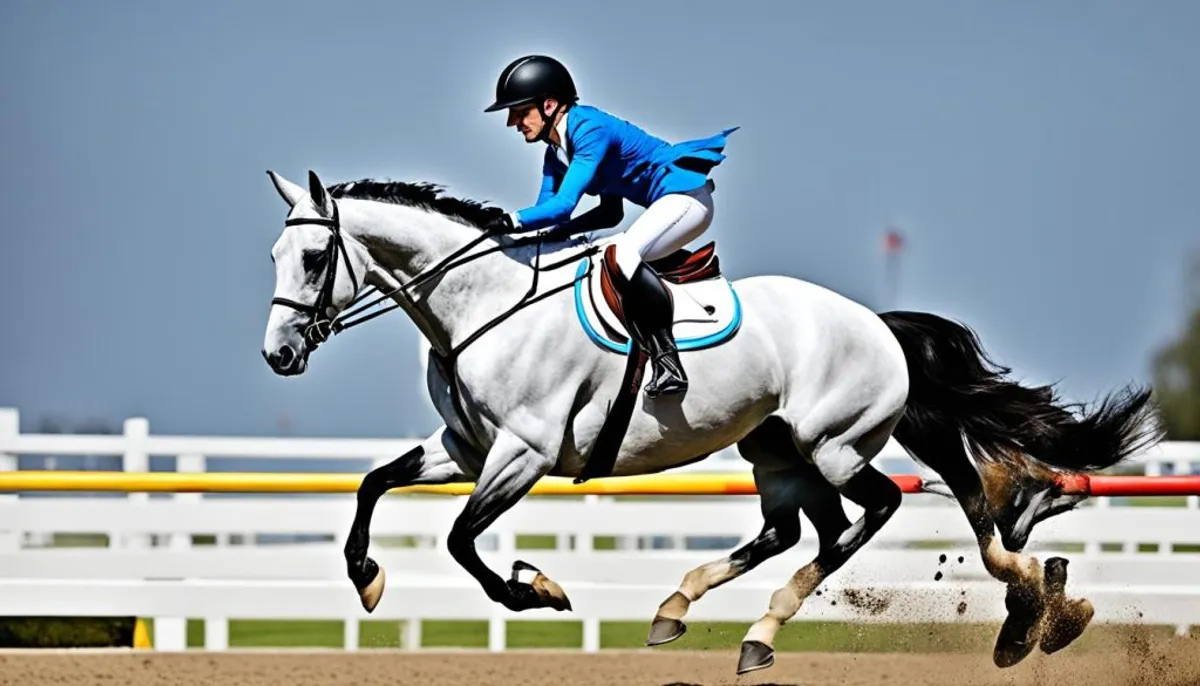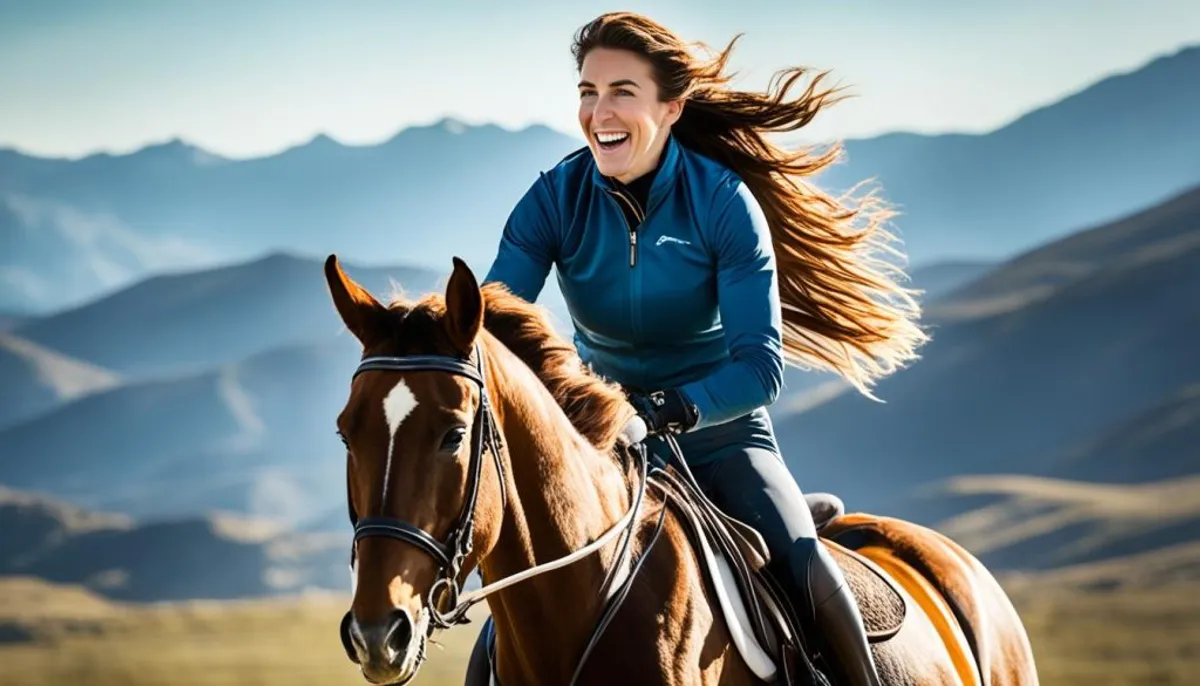Equestrianism is more than just a pastime. It is a sport that requires physical and mental effort. The man and the horse form a perfect duo, requiring skill, endurance, and athletic performance. Equestrian competitions prove its status as a sport.
Equestrianism, often seen as elegant, requires a physical effort and constant self-control. The bond with the animal and the teamwork make it unique. That is why equestrianism is a true sport.

Key ideas to remember:
- Equestrianism is a sport that combines physical and mental effort
- This discipline involves skill, endurance, and athletic performance
- The numerous equestrian competitions testify to the sporting nature of equestrianism
- The bond with the animal and teamwork are unique aspects of this sport
- Equestrianism deserves recognition as a true sport
What is a sport? Equestrianism meets all the criteria
To be a sport, an activity must meet certain criteria. Equestrianism perfectly meets these requirements.
A demanding physical effort
Equestrianism requires significant physical effort. The work of the muscles, especially at the trot and the "collected" canter, showcases its sporting side.
A competition-oriented practice
Equestrianism is practiced competitively. Names like Pénélope Leprevost, Steve Guerdat, and Kevin Staut illustrate this competitiveness.
A regulated and institutionalized activity
Global rules, such as those from the French Equestrian Federation (FFE), govern equestrianism. This regulation and institutionalization confirm its status as a sport.
Equestrianism meets the essential criteria: physical effort, competition, regulation, and institutionalization. It is therefore a complete sport.
Why equestrianism is a sport
Equestrianism is more than just a pastime. It is a demanding sport that requires impeccable physical condition and a resilient mindset. Let’s explore these two key aspects of high-level equestrianism.
A good physical condition is essential
Practicing equestrianism in a sporting manner requires excellent physical condition. This includes strengthening deep muscles, such as the abdominals, back muscles, and adductors. These muscles are crucial for the rider's balance and stability.
A true resilient mindset
The physical condition is not the only criterion. Equestrianism also demands a resilient mindset. The horse senses its rider's emotions. Therefore, one must be capable of constantly questioning oneself and accepting the uncertainty of the animal. This determination is key to overcoming challenges and progressing.
Equestrianism is a complete sport, requiring both physical and mental effort. This is what makes equestrianism so rich and unique.

Equestrianism, a complete and demanding sport
Equestrianism is more than just getting in the saddle. The daily work off the saddle, such as fetching the horse or caring for an injured one, is also tough. The complete equestrian sport requires great commitment.
An intense daily workload even off the saddle
Caring for a horse involves many physical tasks:
- Grooming and caring for the animal
- Cleaning and organizing the stable
- Preparing and storing riding equipment
- Moving the horse from one place to another
These off-saddle equestrian tasks demand good physical fitness. They are crucial for competitive equestrianism.
Real determination and perseverance required
Being competitive in equestrianism requires equestrian determination and perseverance. Progress can be slow, and doubts frequent. A strong will is necessary to overcome these challenges.
Notable physical and mental benefits
Practicing equestrianism regularly offers numerous physical and mental benefits. It improves muscle tone, especially in the legs, buttocks, back, abdominal area, and arms. It also helps achieve better posture and a more elegant silhouette.
In terms of mental health, equestrianism helps observe the horse's behavior and control negative emotions. This develops a better emotional management. Working with the animal increases patience, concentration, and self-control.
Improved muscle tone
Riding a horse requires a lot of muscular work, especially in the legs. It strengthens the muscles of the legs, buttocks, and back. It improves posture and gives a more toned silhouette.
Better emotional management
Equestrianism requires the rider to remain calm and self-controlled to communicate well with their horse. This helps better manage stress and anxiety on a daily basis.

Equestrianism is therefore a complete sport, offering notable physical and mental benefits. It is an interesting sport to practice.
Some precautions to take
Equestrianism is a complete sport that is good for health. However, there are some medical contraindications to consider. People with epilepsy, blood clotting disorders, or osteoporosis should consult their doctor before starting.
On the other hand, equestrianism can help relieve certain back problems. It is important to consult professionals to prevent risks and accidents.
Technical learning, an essential step
Before riding, taking training with a certified instructor is crucial. This teaches the right gestures and reflexes to be safe in the saddle.
Wearing appropriate safety equipment
- The helmet is essential and must be worn at every outing.
- The back protector is recommended to absorb shocks.
- Boots, gloves, and a protective vest are also useful.
Warming up, a necessary step
Before mounting, doing warm-up exercises and stretches is recommended. This prepares the body for effort, reduces the risk of injuries, and improves performance.
By following these precautions, equestrian enthusiasts can fully benefit from this sport. They will also reduce the risks of accidents.
Conclusion
Equestrianism is much more than just a sport. It requires great physical and mental effort from riders. They must find harmony with their mount. This activity offers numerous advantages, both physically and mentally.
It is accessible to all, with some precautions. Equestrianism is not just a horseback ride. It is a sporting discipline that requires determination and perseverance.
It improves physical condition and helps manage emotions. Equestrianism deserves its place among sports. It offers great opportunities for those who commit to it.
FAQ
Why is equestrianism considered a sport?
Equestrianism is a complete sport. It requires significant physical effort and regular competition. It is also governed by rules and federated.
What are the main physical and mental benefits of practicing equestrianism?
Physically, equestrianism strengthens the muscles of the legs, buttocks, back, and arms. Mentally, it helps better manage emotions. This comes from observing the horse's behavior.
What are the physical and mental requirements of equestrianism?
One must be in good physical shape for equestrianism. Mentally, one must be able to control their emotions. The horse reacts to the rider's emotions.
Why is equestrianism considered a complete and demanding sport?
Equestrianism goes beyond simple riding. The work off the saddle is also demanding. One must be determined and persevering to excel.
Are there any medical contraindications to practicing equestrianism?
Some medical conditions, such as epilepsy, are contraindicated. However, equestrianism is often beneficial for the back. Technical learning and wearing safety equipment are essential.
RelatedRelated articles



